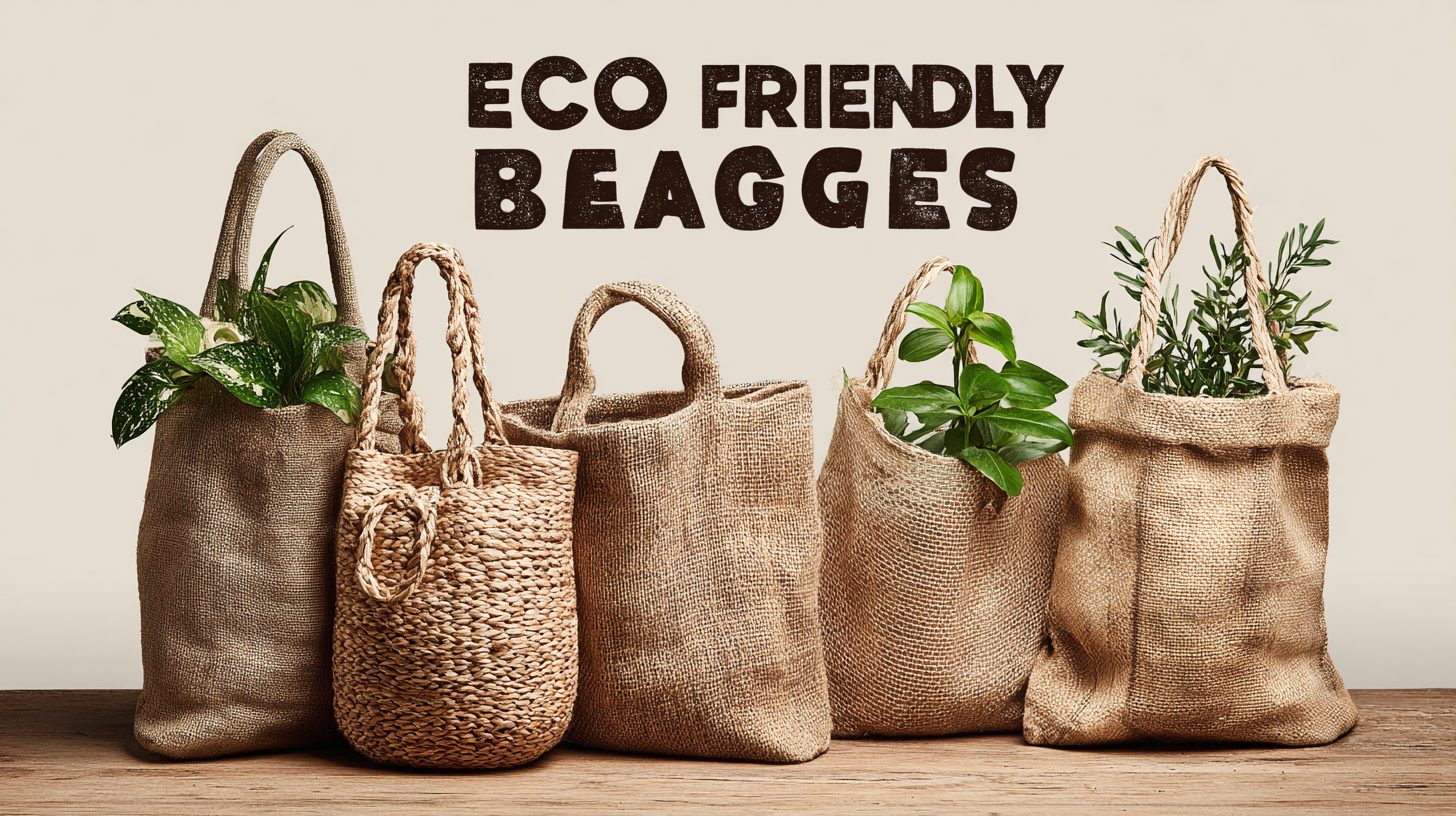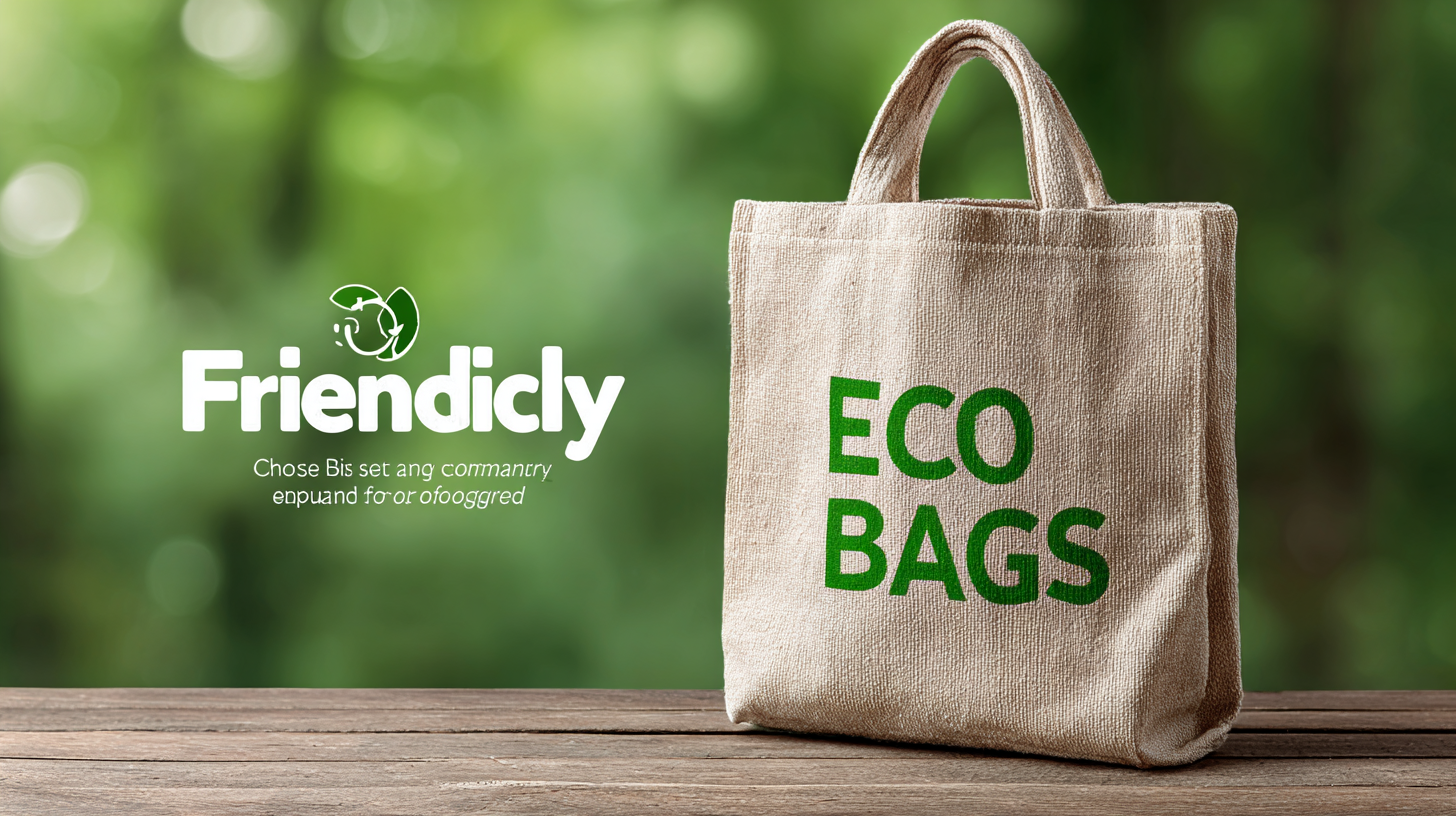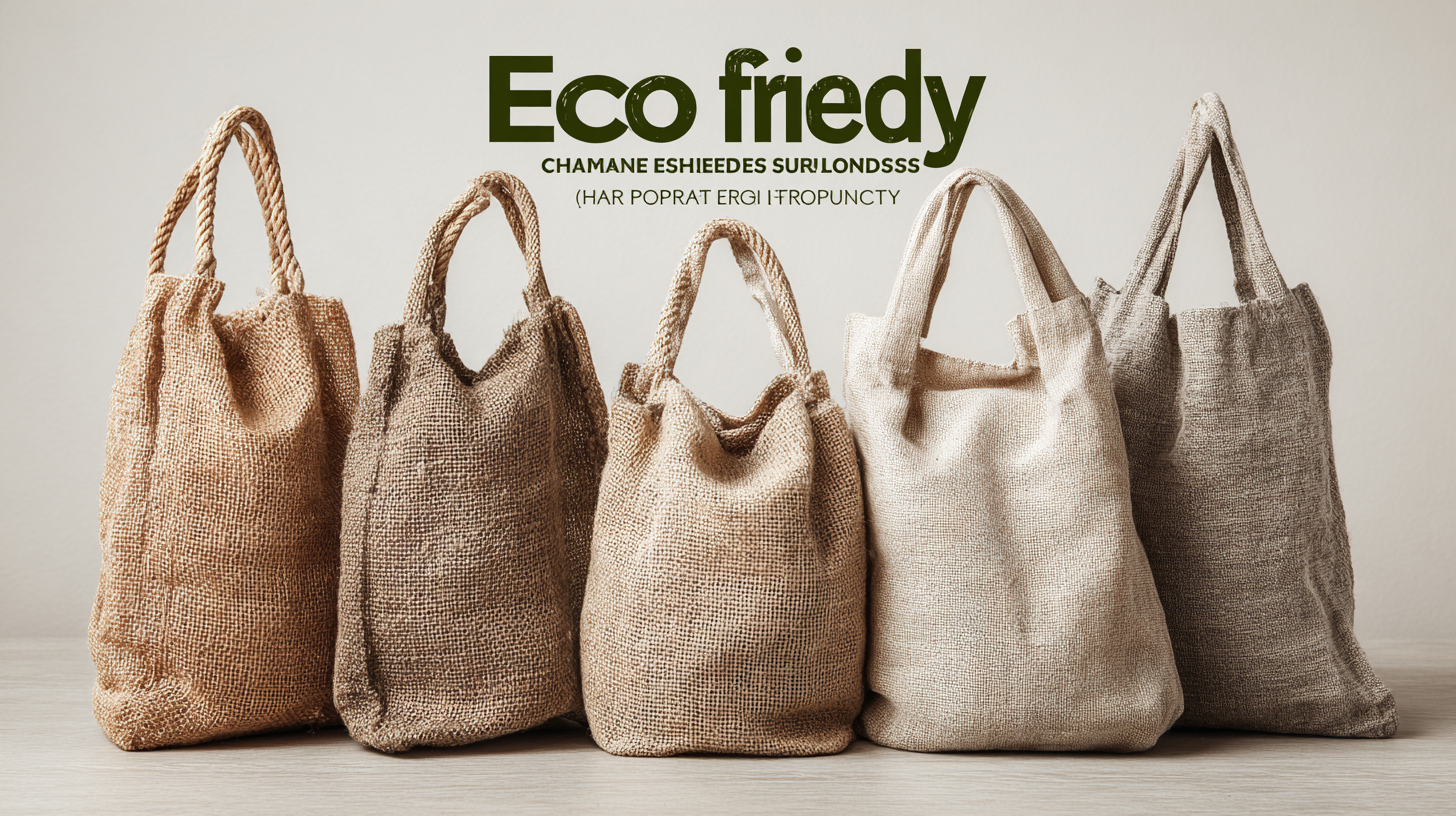As consumer awareness about environmental issues grows, the demand for Eco Friendly Bags has surged dramatically, with the global eco-friendly bags market projected to reach USD 42.8 billion by 2027, expanding at a CAGR of 5.5% from 2020 to 2027, according to a report by Fortune Business Insights. This increase is driven by a push towards sustainable procurement practices among businesses looking to reduce their carbon footprints and enhance their brand image. Eco Friendly Bags not only offer a responsible alternative to single-use plastics but also present diverse options ranging from biodegradable materials to reusable fabric designs. However, with numerous manufacturers offering various types of eco-friendly bags, choosing the right one can be overwhelming. Understanding the key factors involved—such as material quality, manufacturing processes, and certifications—becomes paramount to making informed and sustainable choices that align with both personal and organizational values.

When selecting eco-friendly bags, it’s essential to understand the materials used and their environmental impact. Common materials include organic cotton, jute, hemp, and recycled plastics. Organic cotton is grown without harmful chemicals, making it a sustainable choice, while jute is biodegradable and durable, ideal for heavy-duty use. Hemp, known for its strength and versatility, grows rapidly and requires minimal water. On the other hand, recycled plastics help divert waste from landfills and reduce reliance on virgin materials.
Tips for choosing the right eco-friendly bag include evaluating the bag’s lifecycle. Consider how the bag is produced, the energy used, and the end-of-life options. Look for certifications like Global Organic Textile Standard (GOTS) for textiles, which guarantee responsible sourcing and production practices. Additionally, choose bags that are designed for multiple uses to reduce waste. Investing in high-quality, durable bags not only supports sustainable habits but also encourages a circular economy by minimizing the need for single-use plastics.
| Material | Biodegradability | Durability | Reusability | Carbon Footprint |
|---|---|---|---|---|
| Cotton | Yes | High | Reusable | Moderate |
| Jute | Yes | High | Reusable | Low |
| Recycled Plastic | No | Moderate | Reusable | High |
| Biodegradable Plastics | Yes | Low | Limited | Moderate |
| Hemp | Yes | Very High | Reusable | Low |
When selecting eco-friendly bags for sustainable procurement, it’s essential to focus on a few key features that make them truly sustainable. First and foremost, consider the materials used. Look for bags made from recycled or biodegradable materials to minimize your environmental footprint. Organic cotton, hemp, and recycled plastics are excellent options that not only offer durability but also align with eco-conscious values.
 Another crucial aspect is the bag's lifespan. Invest in high-quality bags that can withstand wear and tear, which will ultimately reduce the need for frequent replacements. Assess the stitching, handles, and overall construction to ensure the bags can last through multiple uses. Remember, a longer-lasting product is not just better for the planet; it also saves money in the long run.
Another crucial aspect is the bag's lifespan. Invest in high-quality bags that can withstand wear and tear, which will ultimately reduce the need for frequent replacements. Assess the stitching, handles, and overall construction to ensure the bags can last through multiple uses. Remember, a longer-lasting product is not just better for the planet; it also saves money in the long run.
Lastly, check for certification labels that indicate the bags meet specific environmental standards. Certifications like Global Organic Textile Standard (GOTS) or Fair Trade can provide assurance that the bags are produced responsibly. By paying attention to these features, you can make informed decisions that support sustainable procurement while also promoting eco-friendly practices.
When considering sustainable procurement, the choice of reusable bags is crucial. Various options are available, but their environmental impacts can differ significantly. According to a study by the UK’s Environment Agency, a cotton tote bag must be used at least 131 times before it has a lower environmental impact than the standard single-use plastic bag. This highlights the importance of not just selecting a reusable bag but ensuring its longevity and frequent use.
Additionally, materials play a significant role in the sustainability of reusable bags. A report from the Danish Environmental Protection Agency found that while polypropylene bags have a lower carbon footprint during production compared to cotton bags, their overall environmental impact becomes less favorable when not used multiple times. It takes a polypropylene bag around 11 uses to surpass the environmental impact of a single-use plastic bag. Therefore, consumers should consider both the material and the frequency of use to truly minimize their ecological footprint while making sustainable choices.

When choosing eco-friendly bags for sustainable procurement, it's crucial to consider their certifications and standards. Various organizations, such as the Global Organic Textile Standard (GOTS) and the Forest Stewardship Council (FSC), offer certifications that ensure products are sustainably sourced and produced. According to a report from MarketsandMarkets, the global eco-friendly bags market is expected to reach $31.2 billion by 2027, highlighting the growing demand for sustainable options. Certifications not only assure consumers of a product's environmental impact but also help companies align with sustainability goals.
Tip: Always look for certifications that are relevant to the materials used in the bags. For example, a bag made from organic cotton should ideally hold a GOTS certification, indicating that it meets strict environmental and social criteria.
Standards also play a significant role in defining the quality and sustainability of eco-friendly bags. The ASTM International standards offer guidance on biodegradability, while the European Standard EN 13432 outlines the requirements for compostable packaging. As consumers become more environmentally conscious, knowing that a bag meets these standards can significantly enhance brand reputation.
Tip: When purchasing eco-friendly bags, consider the entire lifecycle of the product, from production to disposal, and ensure that it adheres to applicable sustainability standards. This approach not only minimizes environmental impact but also supports a circular economy.
When considering the balance between cost and sustainability in eco-friendly procurement, it’s essential to recognize that not all green products are created equal. While it might be tempting to opt for the cheapest option available, it’s crucial to evaluate the long-term benefits of investing in higher-quality, sustainable materials. These options often prove to be more durable, reducing the frequency of replacements and minimizing waste over time.
**Tip:** When choosing eco-friendly bags, look for certifications or labels that guarantee sustainable practices, such as Fair Trade or GOTS (Global Organic Textile Standard). This ensures that your purchase supports ethical production and environmental preservation.
Another key factor to consider is the end-of-life of the bags. A sustainable bag should not only serve its purpose but also have a plan for disposal. Bags made from biodegradable materials or those designed for recycling can contribute positively to the environment once they’ve reached the end of their functional life.
**Tip:** Assess the materials used in the construction of the bags. Opt for bags made from recycled or renewable resources, as these contribute less to the overall carbon footprint and promote a circular economy.